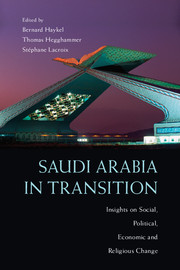Book contents
8 - From Wahhabi to Salafi
Published online by Cambridge University Press: 05 January 2015
Summary
Naming the doctrine preached by Muhammad ibn `Abd al-Wahhab has never been a simple matter. Early foes classified it as a Kharijite sectarian heresy. The name that stuck, Wahhabi, stigmatized the doctrine as the ravings of a misguided preacher. Naturally, Ibn `Abd al-Wahhab and his disciples preferred other names for themselves and their movement: at first, the folk who profess God’s unity (ahl al-tawhid and al-muwahhidun), later, the Najdi call (al-da`wa al-najdiyya). Naming, then, is part of arguments over Ibn `Abd al-Wahhab’s doctrine. If the doctrine is known as Wahhabi, it cannot claim to represent correct belief. The tendency to refer to it as Salafi is a recent development that first emerged among Wahhabism’s defenders outside Arabia well before Wahhabis themselves adopted the term.
To say that a doctrine is Salafi is to ascribe it the authority of Islam’s Pious Fathers. The claim has been part of theological discourse since the ninth century. In modern times, the Salafi label has attained a firm grip on the contemporary Sunni Muslim imagination as a marker for Islam in its pristine form. But variation in which beliefs and practices Muslims count as Salafi makes it difficult to define. It helps to distinguish between claiming to follow the way of the Salaf, which is a common trope in Sunni, especially, Hanbali discourse, and claiming to be Salafi as distinct from other Sunnis. In the former case, we have a set of positions on theology and worship. In the latter case, we have a set of claims that would reshape public institutions (through legal reform) and social identity (dressing a certain way). The first is an artifact of classical Islamic thought; the second is an artifact of how Muslims fashion religion as a total way of life.
- Type
- Chapter
- Information
- Saudi Arabia in TransitionInsights on Social, Political, Economic and Religious Change, pp. 151 - 166Publisher: Cambridge University PressPrint publication year: 2015
References
- 12
- Cited by


